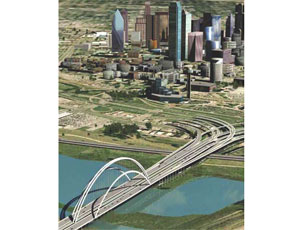The new Colorado History Museum—rechristened the History Colorado Center—located on 12th Avenue between Lincoln and Broadway in Denver, and the new Ralph L. Carr Justice Center, just north of the museum, are under way in their separate sites. Construction on the HCC began in mid-August, with demolition of the old site expected to begin this April after closure of the museum on March 28.

Completion is scheduled for Aug. 26, 2011. An official opening date for the public has not been set.
The original justice building and the Colorado History Museum, constructed in the early ‘70s across Broadway from the Denver Central Library, were handicapped from the outset by a last-minute 30% budget cut that dictated they be value-engineered and scaled back.
Besides being too cramped to fulfill their missions, the buildings have significant water leaks and dated mechanical systems. Leaks are especially onerous in the museum halls, most of which are underground, while the expansive-but-seldom-used outdoor plazas squander valuable space.
“After Justice began looking at doing a new building, issues emerged with the Colorado Historical Society, owner of the museum, over Justice’s need for the entire block,” says Bill Mosher, Trammell Crow area director and principal. “Meanwhile, high on the wish lists of both groups was proximity to Civic Center Park, the Capitol Building and burgeoning Cultural District.
“Eventually, the two groups agreed that the national Urban Land Institute, which had helped locate Coors Field and the Colorado Convention Center, would evaluate the needs of both and propose a solution,” Mosher says.
Separate Sites
ULI recommended that Justice build out the entire block between 12th and 13th and the museum move to another site. Although both groups accepted the plan, the recession of 2001 derailed their efforts. It wasn’t until 2006 that Justice hired Denver’s Trammell Crow to revive the project.
In 2007, legislators agreed to support the original ULI plan, with the caveat that the institutions raise their own money. “There was nothing in the state’s general fund to pay for the projects,” Mosher says. “Driven by its need for space, Justice agreed to increase court fees to fund the Justice Center and provide the Colorado Historical Society with $25 million for a new site.”
Museum funding comes from gaming revenues, while court fees have traditionally supported the Justice Center.
In 2008, the legislature approved the certificates of participation—$257.7 million for Justice, $110.6 million for the museum—to pay for design and construction. With the two buildings financed as one, taxpayers realized...

Post a comment to this article
Report Abusive Comment